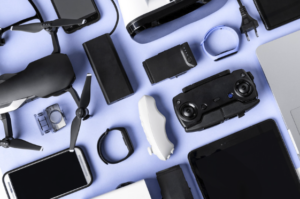Crafting Innovation: How to Make Your Own Gadgets from Scratch
The world of technology is no longer confined to the realms of big corporations and research institutions. With the advent of accessible tools and resources, individuals with a passion for innovation can now craft their own gadgets from scratch. Crafting innovation is not just a hobby; it’s a mindset that fuels creativity and problem-solving. This article delves into the art and science of making your own gadgets, offering insights into the process and inspiring aspiring inventors to bring their ideas to life.
Concept to Creation: The journey of crafting your own gadget begins with a concept – an idea that sparks your imagination. Whether it’s a smart home device, a wearable gadget, or a robotic companion, every innovation starts as a vision in the mind of its creator. Transforming this vision into a tangible prototype requires a blend of technical knowledge, creativity, and determination. It involves understanding the principles of electronics, programming, and mechanical design, as well as experimenting with different materials and components.
Tools of the Trade: To bring your gadget ideas to fruition, you need the right tools. From soldering irons and breadboards to 3D printers and microcontrollers, a plethora of tools are available to makers and inventors. These tools empower you to create intricate circuits, prototype designs, and test your creations. Learning to use these tools effectively is essential for any DIY enthusiast, as they form the foundation of the maker’s toolkit.
Prototyping and Iteration: Prototyping is a crucial phase in the gadget-making process. It involves building a preliminary version of your gadget to test its functionality and design. Prototyping allows you to identify flaws, refine your concept, and make necessary modifications. This iterative approach is fundamental to innovation, as it enables you to learn from failures and enhance your gadget with each iteration. Embracing failure as a part of the creative process is key to developing robust and innovative gadgets.
Open Source and Collaboration: The open-source movement has revolutionized the world of gadgetry. Open-source hardware and software platforms provide a collaborative environment where inventors can share their designs, collaborate on projects, and benefit from collective knowledge. Platforms like Arduino, Raspberry Pi, and GitHub have democratized innovation, making it accessible to a global community of makers. Collaborating with like-minded individuals not only accelerates the development process but also fosters a sense of community and shared learning.
Entrepreneurship and Impact: Turning your DIY gadgets into commercial products is a natural progression for many inventors. Entrepreneurship in the maker space involves not only creating functional gadgets but also understanding market demands, user experiences, and business strategies. Entrepreneurs in the DIY gadget industry often find innovative solutions to everyday problems, disrupting existing markets and creating new avenues for technology integration. Crafting innovation, in this context, extends beyond the realm of personal projects, making a tangible impact on the world.
In conclusion, crafting innovation by making your own gadgets from scratch is a transformative experience. It empowers individuals to explore their creativity, develop technical skills, and contribute to the ever-evolving landscape of technology. By embracing the challenges, failures, and triumphs of the innovation process, makers and inventors pave the way for a future where anyone with a vision can become a catalyst for change. So, let your ideas flow, pick up your tools, and embark on the exciting journey of crafting innovation – the world is waiting for your creative genius to shine.

